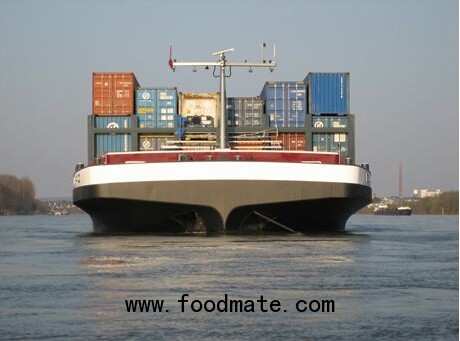
The ten projects started within the FreshCorridor can now, according to FrugiVenta’s Peter Verbaas, be divided into 65 subprojects, some of which have continued successfully, and some never got past the pilot stage. This doesn’t necessarily mean that the initiative has failed though, he says: “Some initiatives turned out to work better on paper than in practice. Other projects stopped because the market changed quickly. The financial part of the project was completed two years ago. In this project, we looked into the possibility to utilize inland shipping in addition to the road transport.”
Verbaas here refers to the project he is working for: Stimulating multimodal logistics through the use of ICT applications. Because transporters, importers and exporters and other involved parties can share their information, a combination of different means of transport can carry as much cargo as possible to the destination at once. This project is no longer part of the FreshCorridor, but flies the Topsector Logistiek flag. Verbaas: “It’s a complex operation, in which demand takes centre stage: what data can be shared under what conditions, and how will it be billed?”
Legal complexity
The legal side makes the project complex, which means the development is going extremely slowly. Sharing information is also about trust, and Verbaas says there’s no problem there: “The participants see the added value of sharing data. A side note here is that some harbour parties do seem to have cold feet. They fear that sharing information will threaten their individual competitive edge. Fortunately, this is slowly changing.”
Transparency and planning
Verbaas calls it a unique project. This claim is supported by Topsector Logistiek, who named this the most practical project of the year no less than three times. Internationally, the project is also getting praise, both from the government and companies outside the sector. As far as Verbaas is concerned, however, there is still a lot to do: “The multimodal support system consists of both providing transparency into flows of goods, and planning the flow of goods. So first we work on making information transparent. After that, the planning module follows. But meanwhile the market is still moving, and we have to respond to the developments. We monitor and discuss those developments within the business counsel Logistics & ICT of the GroentenFruit Huis.”
Backs into it
The working group consists of four importers, one transporter and one shipping company. As far as Verbaas is concerned, these six will be it: “It’s a good representation of the sector. After all, it’s about the quality, not about the quantity. With this diverse group, we’ll keep working hard on this project. Legally, it certainly remains a complex plan, and the fresh produce sector and the port business have to, together, put their backs into it.”





